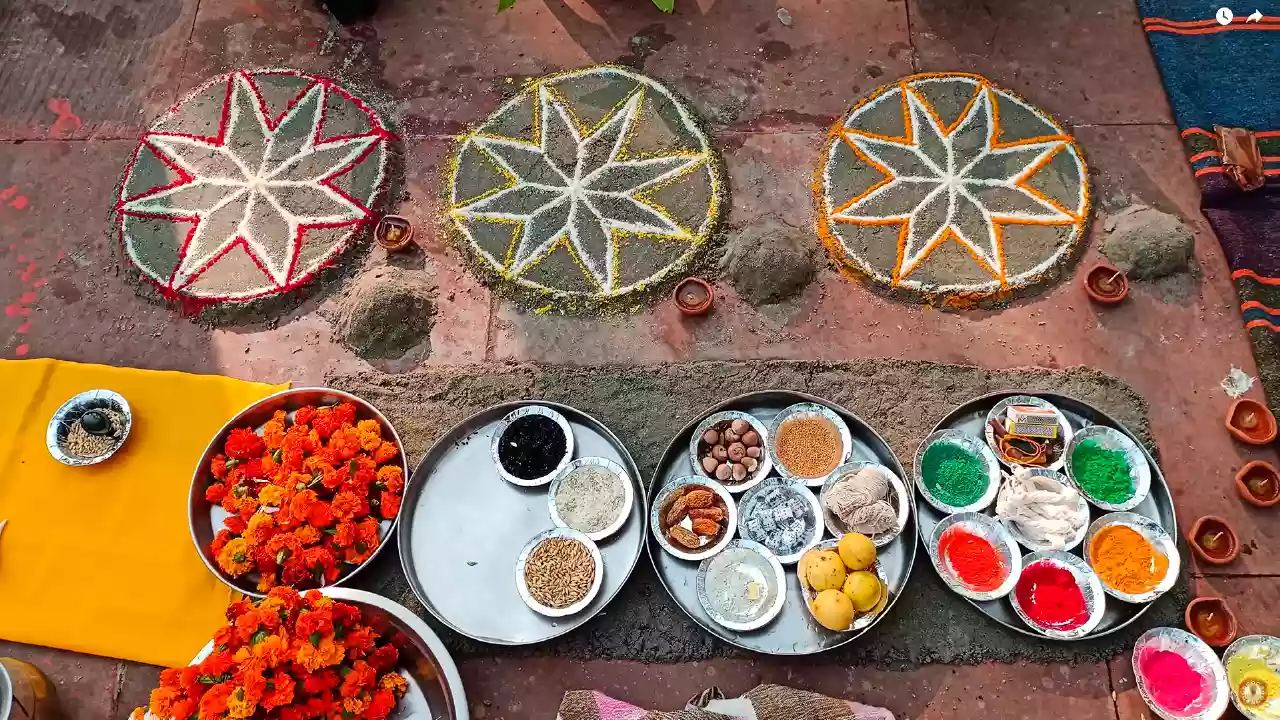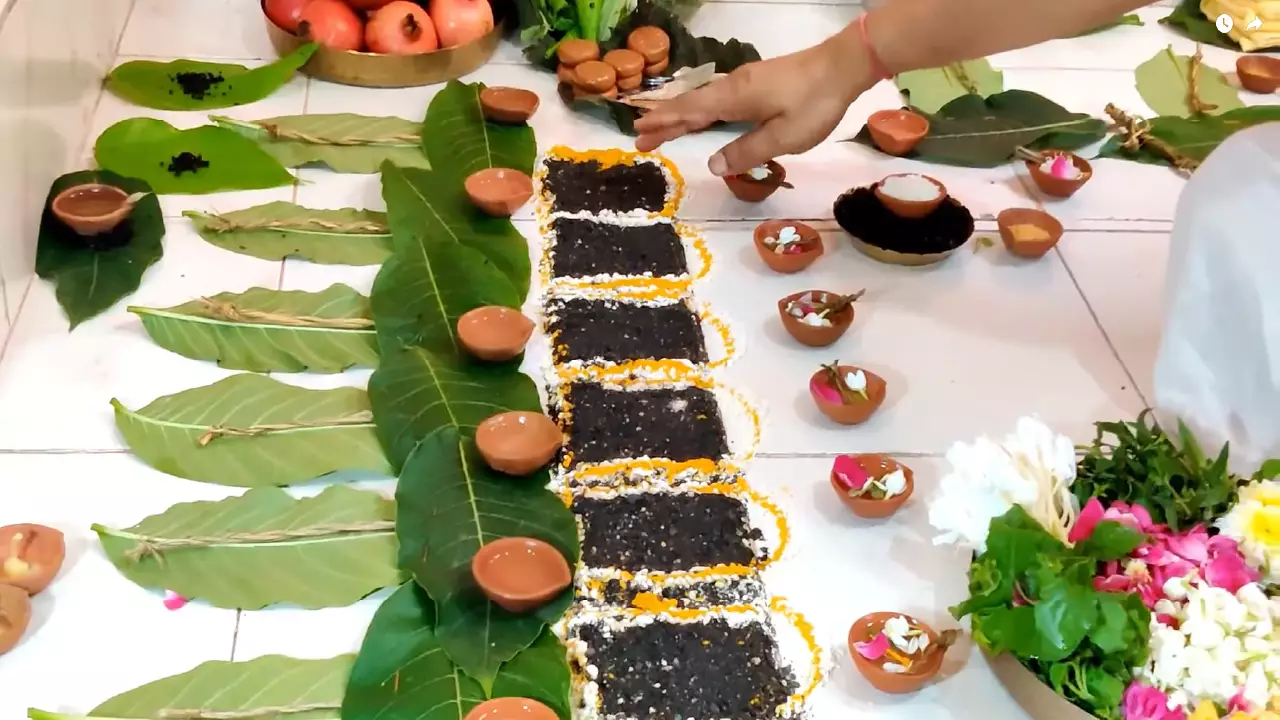For the devout Hindu family in Malaysia, the call to perform Shradh for one’s ancestors is a sacred duty that bridges continents. The journey to the holy city of Kashi (Varanasi) to perform these rites is a pilgrimage of profound love and faith, ensuring the peaceful liberation (Moksha) of the departed souls. This guide provides a comprehensive overview of planning and performing a Shradh from Malaysia, with a focus on the practices of Tamil and South Indian families, a practical itinerary, and detailed travel information.
The Sacred Significance of a Shradh in Varanasi
Kashi is revered as the ultimate destination for the departed. The scriptures promise that a soul whose final rites are performed here attains liberation from the cycle of rebirth. This powerful belief draws pilgrims from across the globe to this holy city. Therefore, to perform a Shradh from Malaysia in Varanasi is to offer one’s ancestors the greatest possible gift: eternal peace.
The Deep-Rooted Devotion of South Indian and Tamil Families
The spiritual landscape of Varanasi is deeply enriched by the presence of South Indian communities.
-
Established Communities: Devotees from Tamil Nadu and Karnataka have long-established residential areas, such as the lanes behind Hanuman Ghat, creating a familiar cultural environment for pilgrims.
-
Adherence to Tradition: South Indian Brahmans are renowned for their rigorous adherence to Vedic scriptural injunctions, performing all rituals, including a Shradh from Malaysia, strictly with Sanskrit mantras.
-
Auspicious Timings: While a pilgrimage can be undertaken at any time, many Tamil families traditionally visit Kashi for ancestral rites during the holy festival of Shivaratri.
Understanding the Core Rites for Your Shradh from Malaysia
A Shradh from Malaysia in Varanasi can encompass several interconnected rituals. Understanding each one is key to a spiritually fulfilling pilgrimage.

The Meaning of Shraddha and Pinda Daan
Shraddha (or pitr-yajna) is the foundational ceremony performed with faith (shraddha) to transform the departed soul from a wandering ghost (pret) into a venerated ancestor (pitr). The central act of this ceremony is Pinda Daan—the offering of pindas (balls of rice or barley flour). These offerings provide a symbolic, transitional body for the soul and offer it spiritual sustenance. The spiritual merit is immense; it is said that ancestors are blessed for a thousand years for every sesame seed included in the pindas. A Tirath Shraddh, which is what you perform in a holy city like Kashi, typically involves seventeen pinda offerings to twelve paternal and maternal ancestors.
Sapindikarana: The Rite of Merging with the Ancestors
This is the climatic rite, usually performed on the twelfth day after death. Sapindikarana is the ceremony that formally unites the soul of the recently deceased with their three preceding ancestors. It involves the ritual merging of the pinda of the departed with the pindas of the ancestors, officially elevating the soul to the status of a pitr.
Asthi Visarjan from Malaysia: The Final Immersion
For many, a pilgrimage for Shradh from Malaysia also includes the final, crucial act of Asthi Visarjan from Malaysia. This is the immersion of the cremated remains (asthi) into the holy Ganga.
-
The Procedure: The ritual is simple but powerful. After a purificatory bath and tonsure (ritual head shaving), the chief mourner, guided by a priest, invites the soul to reside in Kashi before scattering the ashes into the river. This act symbolizes the final release of the soul from its earthly ties. A well-planned Asthi Visarjan from Malaysia is a key part of the journey.
The Ritual Ecosystem of Kashi: Specialists for Your Rites
When you arrive to perform your Shradh from Malaysia, you will be guided by a network of traditional ritual specialists.
-
Priestly Specialists:
-
Mahabrahman: The funeral-priest who presides over the initial rites for the pret and accepts the primary gifts (dan).
-
Tirath-purohit or Panda: The pilgrimage-priest who guides the Tirath Shraddh and accepts gifts in the name of the now-venerated ancestor (pitr). Many South Indian families rely on North Indian pandas.
-
Karam-kandis: High-status Brahman ritualists who may be employed to direct the ceremonies.
-
-
The Barbers (Nai): Barbers perform the tonsuring of the chief mourner and other male relatives, a crucial act of purification usually done on the tenth day.
-
The Doms: This is the community that manages the cremation grounds and provides the sacred fire for the pyre.

Specific Ritual Nuances to Be Aware Of
-
Cremation Rites: If a body is brought for cremation (Kashi-labh), it is given a final dip in the Ganga. Midway through, the chief mourner performs Kapal Kriya (the rite of the skull), cracking the skull with a bamboo pole to release the soul. This is often followed by Asthi Visarjan from Malaysia.
-
Circumambulation: Unlike rites for the gods, South Indians typically circumambulate the pyre in the anti-clockwise (apsavya) direction, which is specific to ancestral rites.
-
Food Restrictions: During the intense mourning period, the family must observe strict austerity, consuming only pure (sattvik) vegetarian food without salt, turmeric, or fried items. This is an important discipline to maintain when planning your Shradh from Malaysia and the associated Asthi Visarjan from Malaysia.
A Practical Service Package for Your Shradh in Varanasi
For those undertaking a Shradh from Malaysia, arranging a comprehensive service package is the most reliable way to ensure a seamless experience.
A typical package for a Shradh in Varanasi includes:
-
An experienced priest to conduct all ceremonies according to your traditions.
-
All necessary Pooja Samagri (ritual materials).
-
The full performance of Pinda Daan and Tarpan.
-
Brahmin Bhoj (feeding of Brahmins).
-
Facilitation of symbolic Daan (charitable offerings).
-
Complete guidance for the Asthi Visarjan from Malaysia ceremony, if required.
Planning Your Journey: Flight Options from Malaysia to Varanasi
The travel for your Shradh from Malaysia and Asthi Visarjan from Malaysia requires a connecting flight, as there are no direct services from Kuala Lumpur (KUL) to Varanasi (VNS).
Flight Comparison Table: Kuala Lumpur (KUL) to Varanasi (VNS)
| Airline/Portal | Common Stopover Cities | Approx. Duration | Sample Fare (One-way, INR) | Booking URL |
| Batik Air | Bengaluru (BLR) | 15–18 hrs | ₹13,800–₹15,300 | Trip.com |
| Air India | Delhi (DEL) | 15–20 hrs | ₹15,195–₹22,205 | Air India |
| IndiGo | Bengaluru (BLR) | 15–20 hrs | ₹15,875–₹22,179 | MakeMyTrip |
| Air India Express | Chennai (MAA), Kolkata (CCU) | 13–16 hrs | ₹15,058–₹17,300 | EaseMyTrip |
| AirAsia | Bengaluru (BLR), Chennai (MAA) | 16–23 hrs | ₹17,800–₹23,800 | AirAsia |
| Malaysia Airlines | Kolkata (CCU) | 18–22 hrs | ₹74,200+ | Skyscanner |
| Trip.com | BLR/MAA/DEL/CCU | 12–27 hrs | ₹8,500–₹14,100 | Trip.com |
| Skyscanner | BLR/MAA/DEL/CCU | 12–18 hrs | ₹13,400–₹17,900 | Skyscanner |
| Kayak | Bengaluru (preferred) | 12–18 hrs | ₹25,700–₹26,800 | Kayak |
| Expedia | BLR/MAA/DEL/CCU | 12–18 hrs | ₹17,900+ | Expedia |
| MakeMyTrip | BLR/MAA/DEL/CCU | 12–18 hrs | ₹13,875–₹26,179 | MakeMyTrip |
| Cleartrip | BLR/MAA/DEL/CCU | 12–18 hrs | Check site | Cleartrip |
| EaseMyTrip | BLR/MAA/DEL/CCU | 12–18 hrs | Check site | EaseMyTrip |
Note: Fares are estimates and will vary. Please use the direct links for current pricing.
A Final Blessing on This Sacred Undertaking
The journey to perform a Shradh from Malaysia, and potentially an Asthi Visarjan from Malaysia, is a profound testament to your devotion. This pilgrimage is not merely about fulfilling a ritual; it is about discharging a sacred debt (pitr rin) and ensuring the peaceful liberation of those who came before you. Careful planning, from understanding the deepest nuances of the ceremonies to booking the long journey, allows you to arrive in Kashi with a calm mind, ready to fully immerse yourself in the spiritual purpose of your visit. May your Shradh from Malaysia be a blessed success, bringing eternal peace to your ancestors and divine grace to your family.
